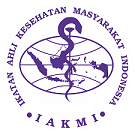The Influence of Cegah Anemia Remaja (Care) Educational Video on Knowledge and Perceptions of Anemia Prevention in Female Adolescents
DOI:
https://doi.org/10.26911/thejhpb.2025.10.03.02Abstract
Background: In adolescents aged 15-20 years, anemia is a disease that is susceptible, especially in young women. Early prevention efforts use educational videos motion graphics It has not been widely studied as to how much influence it has on knowledge and perceptions regarding the prevention of anemia in adolescents. This study aims to determine the effect of the Prevent Adolescent Anemia (CARE) educational video on knowledge and perceptions of preventing anemia in adolescents.
Subjects and Method: A quantitative study was conducted on 68 teenage girls who were susceptible to anemia. This research used a quasi-experimental design that was held in February 2024 at Abi-Ummi Boyolali Islamic Boarding School. The dependent variable were adolescent knowledge and perception. The independent variable was Cegah Anemia Remaja (CARE) educational video. The difference in values between the two groups was analyzed using the Wilcoxon matched-pairs signed-ranks test. The influence of the CARE educational video on adolescents' knowledge and perceptions of anemia was examined using multinomial logistic regression.
Results: The prevalence of knowledge of preventing anemia in adolescents is 58.8% sufficient and the majority's perception of preventing anemia in adolescents is good, at 94.1%. The effect of CARE educational videos on knowledge is significant (OR= 5.40; p <0.001) and on perception is also significant (OR= 5.48; p= 0.013).
Conclusion: Health education through the Cegah Anemia Remaja (CARE) Educational Video has an effect on increasing knowledge and perception of anemia prevention in female adolescents.
Keywords:
anemia, health education, female adolescentHow to Cite
References
Abu-Baker NN, Eyadat AM, Khamaiseh AM (2021). The impact of nutrition education on knowledge, attitude, and practice regarding iron deficiency anemia among female adolescent students in Jordan. Heliyon. 7(2):e0-6348. doi: 10.1016/j.heliyon.2021.e0-6348.
Damayanti F (2013). Pembelajaran berban-tuan multimedia berdasarkan teori beban kognitif untuk meningkatkan kemampuan menyelesaikan masalah program linear siswa X TKR 1 SMKN 1 Doko. J Pendidikan Sains. 1(2):113–140.
Damayanti S, Dewi M, Diah H, Syahri A (2021). The effect of education using video blog (vlog) on the female ado-lescents’ knowledge, attitudes and behaviors on the prevention of iron deficiency anemia (PPAGB) in Ban-dung. J Kesehatan Reproduksi. 4(2): 221–225.
Dwiana S, Pramintarto EG (2019). Penyu-luhan anemia gizi dengan media mo-tion video terhadap pengetahuan dan sikap remaja putri. J Promosi Kese-hatan. 11(1).
Elanda A, Darmansyah D, Fauzi A (2021). Perancangan video animasi edukasi penerapan protokol kesehatan pence-gahan COVID-19 berbasis motion gra-phic. J Interkom. 16(3):32–41.
Enggardany R, Hendrati LY, Hairi NN (2021). Relationship between body mass index (BMI) and anemia among adolescent Indonesian girls (analysis of the Indonesia Family Life Survey 5th data). Amerta Nutr. 5(4):347–352. doi: 10.20473/amnt.v5i4.2021.
Estri BA, Cahyaningtyas DK (2021). Hubungan IMT dengan kejadian anemia pada remaja putri di SMAN 2 Ngaglik Kabupaten Sleman. J Kese-hatan Masyarakat. 8(2).
Ferrer R, Klein WM (2015). Risk percep-tions and health behavior. Curr Opin Psychol. 5:85–89.
Hartati Y, Telisa I, Susanto E, Siregar A (2021). Gambaran asupan zat gizi, konsumsi sayur dan buah dengan status haemoglobin siswa SMP. J Gizi dan Kesehatan. 1(1).
Hatma Z, Indriasari R, Jafar N (2014). Perception about nutritional anemia among anemic adolescent girls in SMAN 10 Makassar. J Gizi Indonesia.
Hutasoit M, Trisetiyaningsih Y, Utami KD (2022). Pengaruh video animasi ten-tang pencegahan anemia dengan perubahan pengetahuan remaja putri. Medika Respati. 17(4):277–284.
Indrawatiningsih Y, Hamid SA, Sari EP, Listiono H (2021). Faktor-faktor yang mempengaruhi terjadinya anemia pada remaja putri. J Ilm Univ Batang-hari Jambi. 21(1):331.
Kementerian Kesehatan Republik Indo-nesia (2018). Revisi buku pencegahan dan penanggulangan anemia pada rematri dan WUS.
Kementerian Kesehatan Republik Indo-nesia (2023). Buku saku pencegahan anemia pada ibu hamil dan remaja putri.
Madestria NPO, Moedjiono AI, Suriah, Tahir M, Masni, Suarayasa K, et al. (2021). Effect of education through video and packaging modifications of iron tablets on female adolescent behavior in the iron supplementation intake in SMPN 2 and SMPN 1 Parigi. Gac Sanit. 35:S127–S130. doi: 10.1-016/j.gaceta.2021.10.011.
Muhlisin A, Supratman, Listiani I (2018). Faktor tingkat pendidikan dan peng-hasilan terhadap persepsi mutu pela-yanan kesehatan di puskesmas. Pros Semin Nas. :84–92.
Munira L, Viwattanakulvanid P. (2024). Knowledge, attitude, and practice to-wards anemia prevention among female students in Indonesia: a mixed method study. Int J Eval Res Educ. 13(1):371–378.
Newhall DA, Oliver R, Lugthart S (2020). Anaemia: a disease or symptom. Neth J Med. 78(3):104–110.
Özdemir A, Utkualp N, Palloş A (2016). Physical and psychosocial effects of the changes in adolescence period. Int J Caring Sci. 9(2):717–723.
Rinjani VR, Erinda, Pratiwi N, Megayana, Maretta Y (2022). The effect of health education through poster media on increasing adolescent girls' knowledge about anemia at MTSN 12 Boyolali. J Promosi Kesehatan.
Walsh Ó, Nicholson AJ (2022). Adolescent health. Clin Integr Care. 14:100123. doi: 10.1016/j.intcar.2022.100123.
World Health Organization. Anaemia [Internet]. Available from: https://w-ww.who.int/health-topics/anaemi-a#tab=tab_1 (accessed 14 Jul 2025).



